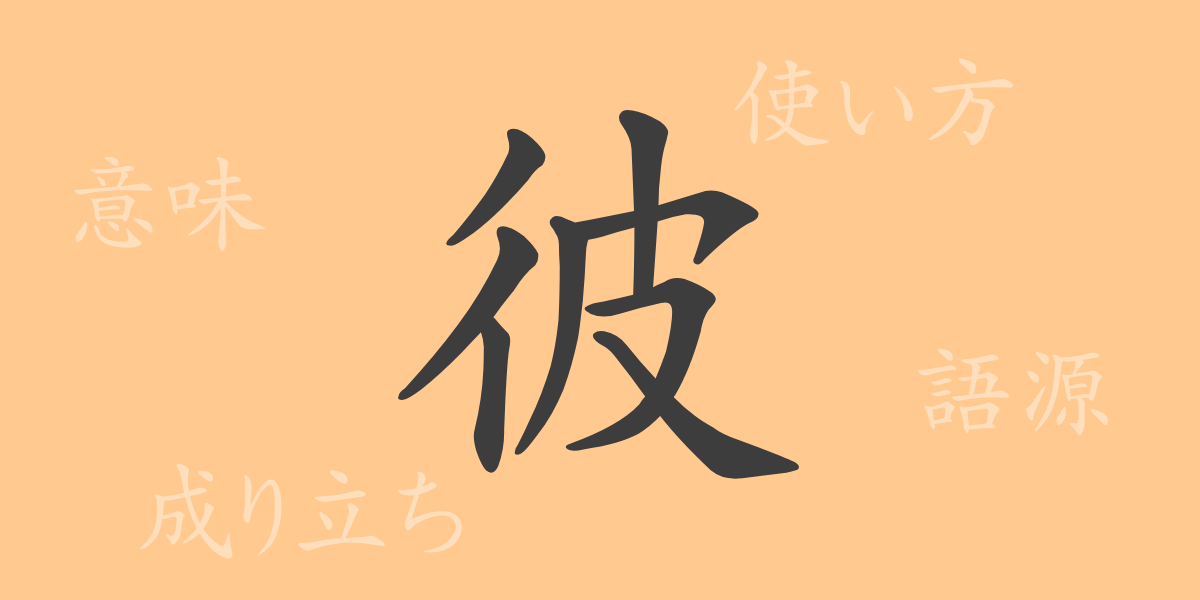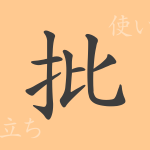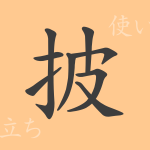The Japanese language is deeply enriched with a culture of Kanji characters. Among them, “彼 (kare)” is one of the frequently used common Kanji characters in daily conversations and literary works. In this article, we will delve into the origins, meanings, usage, and related idioms and expressions of the Kanji “彼 (kare),” exploring its charm. Let’s embark on a journey to uncover the beauty of the Japanese language and the profound depth of Kanji, all while keeping SEO in mind.
The Origins of 彼 (kare)
The Kanji “彼 (kare)” has its origins in ancient Chinese characters known as oracle bone script. Originally, it was derived from a pictograph representing the flow of water and was used to indicate the opposite bank of a river. Over time, its usage expanded to more abstract meanings, such as “over there” or “that person,” serving as a demonstrative pronoun.
The Meaning and Usage of 彼 (kare)
In modern Japanese, “彼 (kare)” is primarily used in three ways. First, as a demonstrative pronoun meaning “that person” or “that gentleman,” specifically referring to a particular male. Second, it is used to indicate a place, such as “over there” or “that place.” Third, it is used metaphorically to refer to specific places or situations, such as “彼の地 (kare no chi)” meaning “that land” or “彼の世界 (kare no sekai)” meaning “that world.”
The Reading, Stroke Count, and Radical of 彼 (kare)
Understanding the reading and structure of the Kanji “彼 (kare)” is also important.
- Reading: In On’yomi (Chinese reading), it is read as “ヒ (hi),” and in Kun’yomi (Japanese reading), it is read as “かれ (kare)” or “かの (kano).”
- Stroke count: “彼 (kare)” has a total of 8 strokes.
- Radical: Its radical is 彳 (ぎょうにんべん, gyouninben).
Idioms, Proverbs, and Expressions Using 彼 (kare) and Their Meanings
Here are some idioms, proverbs, and expressions that include “彼 (kare).”
- 彼此 (ひち, hichi): Meaning “each other,” used when comparing oneself with others.
- 彼岸 (ひがん, higan): Referring to a seven-day period centered around the vernal and autumnal equinoxes, it is a Buddhist event.
- 彼是 (ひぜ, hize): Meaning “this and that,” it expresses comparison or distinction.
- 彼方此方 (あちらこちら, achira kochira): Meaning “here and there,” it refers to various places.
Summary of 彼 (kare)
It is evident that the Kanji “彼 (kare)” has evolved in form and usage over time. It is used not only as a demonstrative pronoun but also to indicate places and in various idioms and expressions with different meanings. For both Japanese learners and native speakers, understanding the background of each character is extremely valuable for deepening their comprehension of the language. We hope this article helps enhance your understanding of the Kanji “彼 (kare).”

























